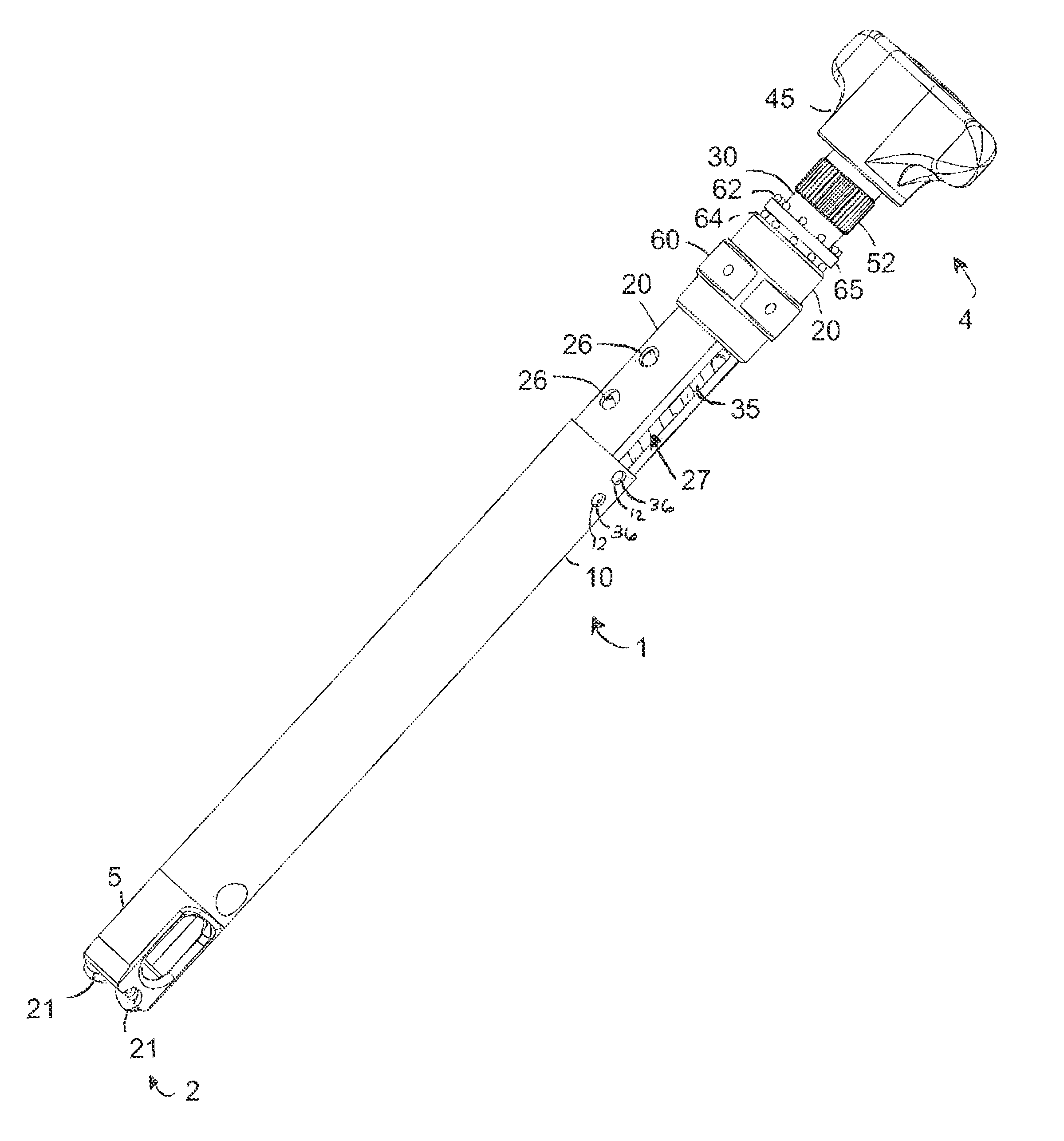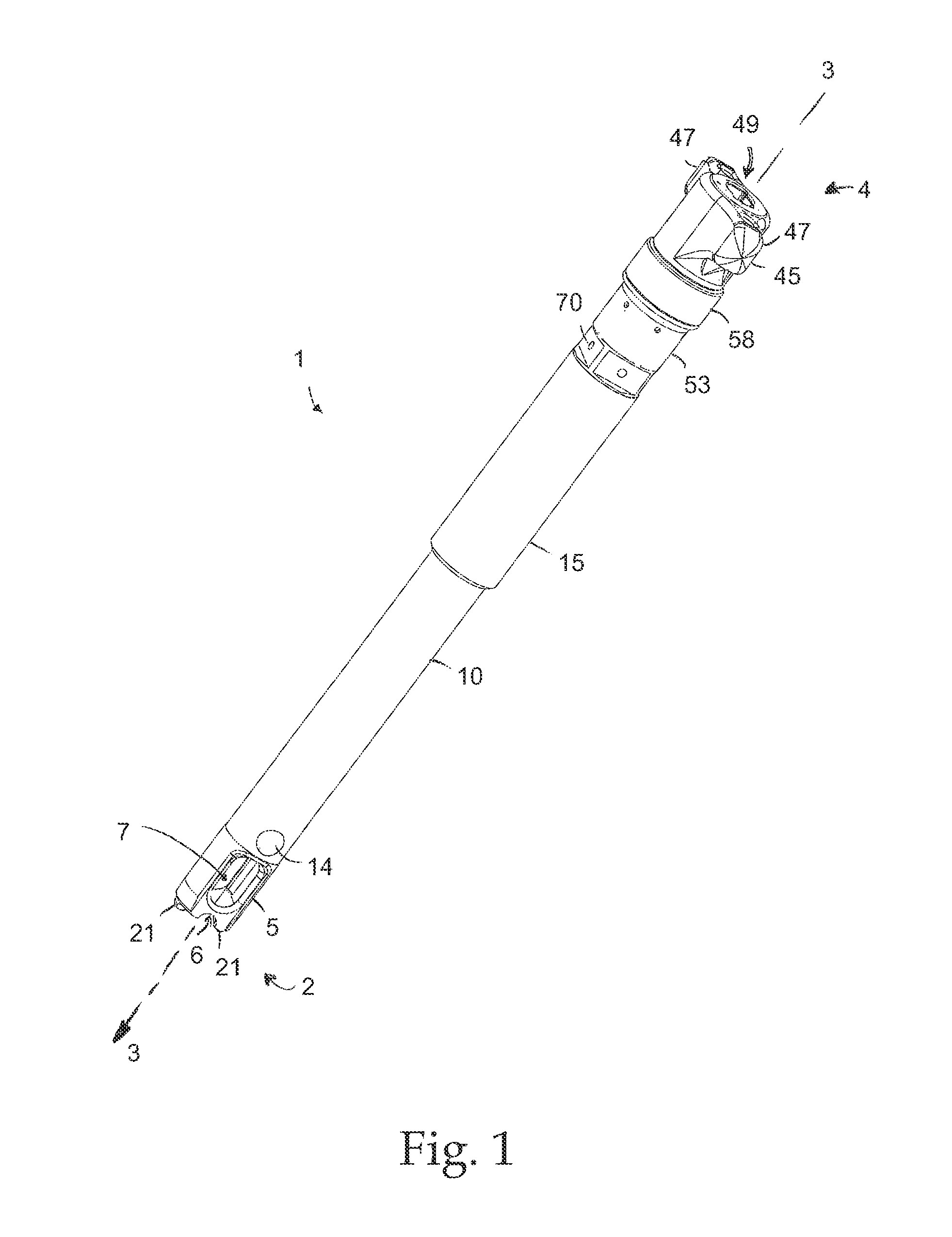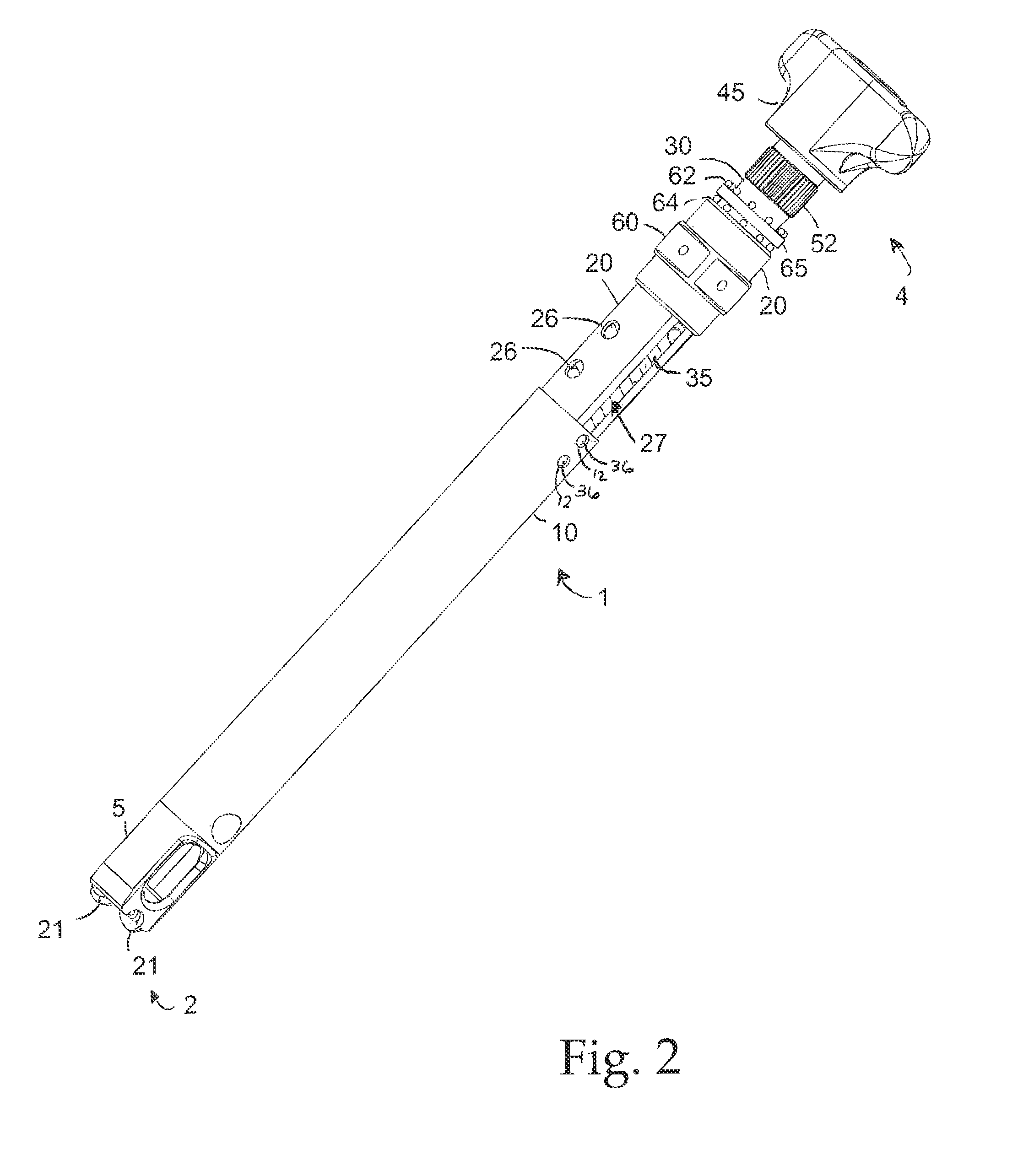Low friction rod persuader
a low friction rod and persuader technology, applied in the field of medical instruments, can solve problems such as unwanted reverse rotation of the drive system, and achieve the effect of less friction
- Summary
- Abstract
- Description
- Claims
- Application Information
AI Technical Summary
Benefits of technology
Problems solved by technology
Method used
Image
Examples
Embodiment Construction
[0032]FIG. 1 illustrates a particular embodiment of the reducer instrument disclosed herein. The exemplary instrument includes a central clamp member with clamping prongs 21 designed to engage a coupling device such as a pedicle screw assembly, a reducer sleeve 10 with a head portion 5 that is contoured to abut a spinal rod and shift the rod along the instrument axis 3, and a rotatable actuator 45 configured to shift the reducer sleeve 10 axially when rotated. Rotatable actuator 45 includes two lateral flanges 47 in order to form a T shape for easy manipulation by a surgeon. A ratchet system, which minimizes or substantially prevents unwanted backward rotation of the handle 45 when engaged, is located within the instrument and hidden from view by a ratchet housing 53 and a ratchet cover 58.
[0033]The reducer head portion 5 of the exemplary instrument includes a reducing surface 6 formed as a semi-cylindrical notch designed to match the contour of the spinal rod to be reduced, and als...
PUM
 Login to View More
Login to View More Abstract
Description
Claims
Application Information
 Login to View More
Login to View More - R&D
- Intellectual Property
- Life Sciences
- Materials
- Tech Scout
- Unparalleled Data Quality
- Higher Quality Content
- 60% Fewer Hallucinations
Browse by: Latest US Patents, China's latest patents, Technical Efficacy Thesaurus, Application Domain, Technology Topic, Popular Technical Reports.
© 2025 PatSnap. All rights reserved.Legal|Privacy policy|Modern Slavery Act Transparency Statement|Sitemap|About US| Contact US: help@patsnap.com



